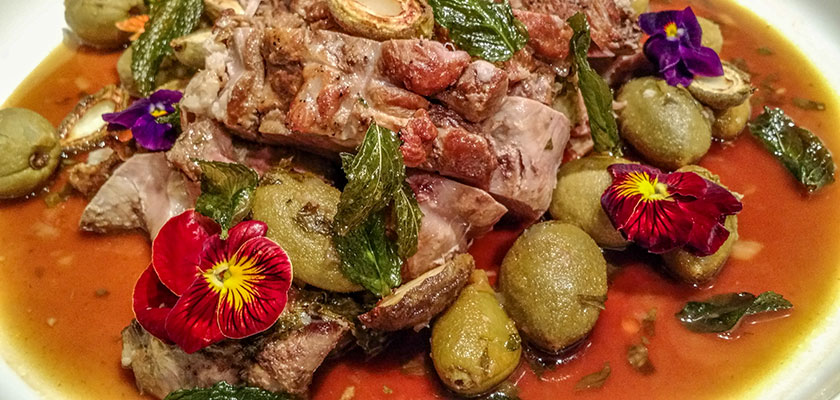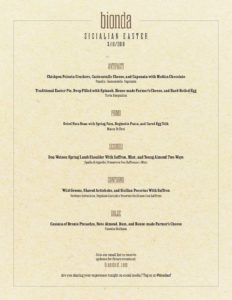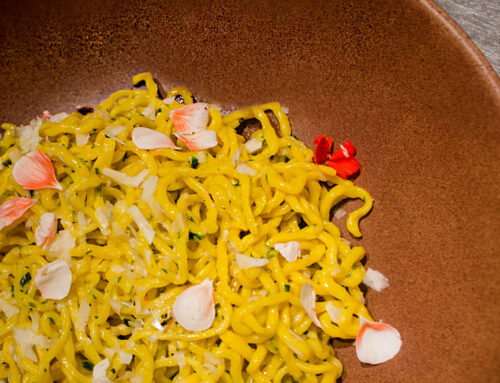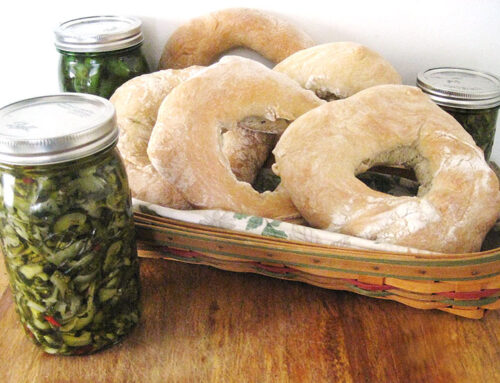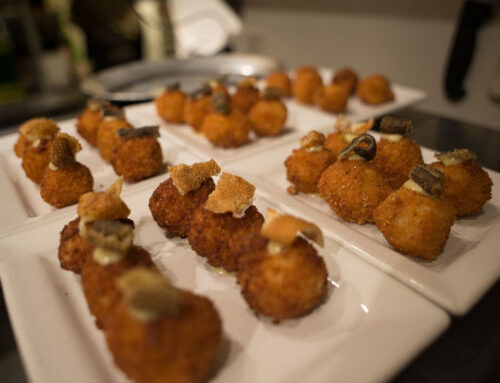EVENT DATE: APRIL 18th, 2016
The region and its flavors
Have you ever visited an Italian specialty food store? Did you know that chances are 50 percent of the products sold there are from Sicily? Bronte pistachios, Noto almonds, Nero d’avolo and Marsala wines, Pantelleria capers, Castelvetrano olive oil, Trapani salt, and Estrado tomato paste.
These are the bounty of Silicy’s ideal Mediterranean climate. With its location, roughly 100 miles off the coast of North Africa, and high-mineral soil from Mt. Etna, the island’s active volcano. Panetelleria, on the southeastern coast, grows the best capers in the world. The middle plains and intense sunlight also provide perfect weather for growing several varieties of citrus, and grains. The eastern coast includes the great salt road, which runs from Trapani to Paceco and ends in Marsala—providing us with some of the best salt in the world, where production is said to date back to the Phoenicians.
Let’s take a closer look at the menu…
Antipasti
Chickpea Polenta Crackers, Caciocavallo Cheese, and Caponata with Modica Chocolate (Panelle, Caciocavallo, Caponata)
I generally choose dishes people are not familiar with in the U.S., but this eggplant caponata recipe was an exception. Why? Because, I’ve eaten caponata several times and it never meets my expectations. For this recipe, instead of using tomato paste, I used estrado—a paste made from fresh tomatoes by dehydrating them over several days under the intense Sicilian sun. I also added Pantelleria capers mixed with green olives from Castelvetrano, a Marcona-style Noto almond, and Sicilian pine nuts. I added a chocolate sauce, traditionally called San Bernadino, to the caponata. In this rendition, I shaved unconched chocolate (meaning without a lengthy mixing, agitating, and aerating process for heated chocolate) from Modica, Sicily. Unconched was the most popular way to eat and use chocolate for hundreds of years, after it was first brought to Sicily by the Spanish (and originally from the Aztecs when they conquered South America).
Antipasti
Traditional Easter Pie, deep filled with Spinach, House-made Farmer’s Cheese, and Hard-Boiled Egg (Torta Pasqualina)
This is one of the most famous Easter dishes throughout Italy. This three-inch-deep torta was filled with housemade cheese, spinach, artichokes, and whole eggs, which were cooked right into the middle of it.
Primo
Dried Fava Bean with Spring Fava, Reginette Pasta, and Cured Egg Yolk (Maccu di Favi)
This soup is traditionally made with dried fava beans in late-winter or early-spring, and sometimes during the first harvest of fresh favas. I combined dried and fresh favas, topping the soup with fried fava leaves and cured egg yolk.
Secondo
Don Watson Spring Lamb Shoulder, Saffron, Mint, and Young Almond Two Ways (Spalla di Agnello Primavera Con Zafferano e Mint)
Lamb is a popular spring dish in Sicily, especially during holidays. I missed the availability for milk-fed baby lamb by one week, but the lamb I used was just one week from being weaned, and extremely tender. I paired the lamb with young green almonds, a popular ingredient in the Middle East, which is making its way to San Francisco, and Sicily. Here, they were pan-fried and poached, complementing the dish’s saffron flavor.
Saffron, which arrived in Sicily between 827 and 1061, when Arabs conquered the island, is an important Sicilian cooking ingredient. It’s used in sauces, arancini, and even Pecorino and other sheep milk cheeses.
Dolce
Cassata of Bronte Pistachio, Sicilian Almond, Rum, and House-made Farmer’s Cheese (Cassata Siciliana)
I baked the cassata, or cake, with homemade cheese and preserved fruits which are popular on the island. I used whole glace kiwi, apricot, plum, and orange, filling the cake with blood orange jam—because it was too late in the season to highlight the fresh flavor of this popular Sicilian crop. Harnessing the intoxicating aroma and flavor of Bronte pistachios—the most famous pistachios in the world— I made a paste of fresh ground Noto almonds and Brontes for decoration.
- CLICK FOR LARGE DISPLAY

